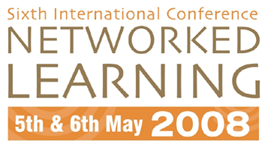

Similarity based and knowledge creating metaphors - a didactic framework for informing design
Anne Gerdes
Institute of Business Communication and Information Science, University
of Southern Denmark, gerdes@sitkom.sdu.dk
Abstract
Metaphors are pervasive in language and thought. Metaphors can imply a change in knowledge and thereby create insight. The concept of metaphors has been widely used in research on design and learning. For that reason, I wish to bring attention to a distinction between two ways of using metaphors: A similarity based use of metaphors and a similarity creating use. In addressing the metaphorical mechanism from these two angles, I argue that the similarity based use of metaphor is well suited for practical design purposes in connection to the development of course design. On the other hand, when occupied with methodological issues concerning didactic design, we, as designers, have to be avant-garde. To help us behave as front-runners, we need tools for reflection about our creative practice. Therefore, I argue that we might turn to the use of metaphors in a similarity creating manner, since this use of metaphor can facilitate the creative exploration of new ideas by which we gain insight into the unique qualities of virtual learning cultures and environments. In this setting, the similarity creating potential of the metaphor is brought into focus as a useful mechanism for reflection about design.
By means of a similarity based use of metaphors we can highlight certain features already dominant in a given source area in order to carry over a familiar understanding of a new environment. Making the unfamiliar familiar enables us to design a platform supportive of a given practice of learning, since a similarity based use of metaphor generates a conceptual fit between different areas.
By introducing a similarity based use of metaphors in design we are able to establish a platform that reflects and supports a given didactic practice. Different metaphors points to different ways of conceptualizing a situation and bring about different ways of acting. However, at the same time, we have to be careful in choosing metaphors in view of the fact that they also narrow down our perspective. The metaphorically based ability of highlighting certain aspects of a situation naturally results in constraining items deemed irrelevant in a given context. Thus, bearing the similarity based use of metaphors in mind; we see and act, supported by metaphors that recast an already existing practice or perspective in a new setting.
Therefore, I bring in a similarity creating use of metaphors, which might support a pro-active development of didactic design strategies within the field of networked learning. This use of metaphors highlights their creative power in emphasizing the mechanism by which the juxtaposition of different objects and situations may provide for a very new understanding of a domain to emerge in revealing an aha-experience. From a methodological point of view, it makes good sense to move beyond the similarity based use of metaphors, since looking at how the new world resembles the well known is not sufficient to ensure a forceful development of a theoretically based framework on the topic of design strategies. As a first step, to promote creative metaphor building, one might force a creation of similarity by, in the first place, deliberately making the familiar unfamiliar. Thus, from this foundation, we might carry on and concentrate to see if we can create new links between domains without previous similarities. By a similarity creating approach towards metaphor building, we are provided with a tool that may enable us to reflect upon creative design ideas supportive of strategies for future didactic design.
| About NLC |
2008 Conference Papers
| Conference Committee| Keynote
Speakers
| Papers from previous NL conferences |Research Seminars| Current Conference
| Sponsors | Contact
|
